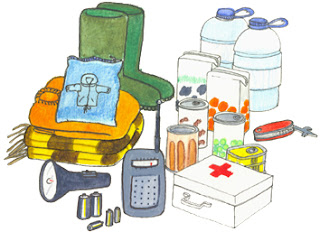![]()
GENEVIEVE RAJOY
The rescue group of Nahual Montana School has generated this basic checklist of necessary equipment for anyone traveling to assist in earthquake-affected areas. Please read it carefully before you set out.
Please note: This list is just a suggestion of ESSENTIAL equipment, anyone planning to go to the coast should read it carefully and consider these and other needs that are specific to each person.
Before leaving it is essential to consider the following:
– Please join an organized group connected to official and reliable sources. Don’t leave without knowing exactly what you are going to do and where to help.
– The situation on the Ecuadorian coast is extremely complicated. The work to be done there is under very demanding conditions and one must be aware that they will be dealing with extremely physically and emotionally impactful scenarios.
– The situation on the Ecuadorian coast is extremely complicated. The work to be done there is under very demanding conditions and one must be aware that they will be dealing with extremely physically and emotionally impactful scenarios.
– There is no water, food or shelter in the area. If you leave you have to be completely self-sufficient.
BASIC EQUIPMENT LIST
1. Personal Equipment:
1. Rubber boots and work shoes (strong)
2. Work gloves
3. Helmet
4. Sleeping bag
5. Mosquito net or repellent
6. Mat
7. Flashlight(s) plus extra batteries
8. Warm and waterproof clothing
9. Sun hat, sunscreen
10. Knife
11. First Aid Kit
12. Work backpack
13. Sunglasses and work glasses
14. Protective masks
15. Matches and candles
1. Rubber boots and work shoes (strong)
2. Work gloves
3. Helmet
4. Sleeping bag
5. Mosquito net or repellent
6. Mat
7. Flashlight(s) plus extra batteries
8. Warm and waterproof clothing
9. Sun hat, sunscreen
10. Knife
11. First Aid Kit
12. Work backpack
13. Sunglasses and work glasses
14. Protective masks
15. Matches and candles
HOUSING AND BASIC NEEDS
1. Tent or tarp with mat, 10-meter rope. You have to stay dry!!!
2. Water: Thermos and bottles. 1 gallon per day per person (note this is only for personal consumption)
3. Garbage: What goes in comes out. 10 extra thick garbage bags or covers to collect waste.
4. Prepare a human waste management system
2. Water: Thermos and bottles. 1 gallon per day per person (note this is only for personal consumption)
3. Garbage: What goes in comes out. 10 extra thick garbage bags or covers to collect waste.
4. Prepare a human waste management system
EYE: Human waste management is crucial to prevent diseases and contamination in highly vulnerable areas.
5. Food for the number of days you plan to be there.
6. Kitchenette, pots, gas, gasoline and basic implements to be able to cook for each person.
7. FIRST AID KIT Complete and reinforced,
8. Toiletries, soap, disinfectant gel.
6. Kitchenette, pots, gas, gasoline and basic implements to be able to cook for each person.
7. FIRST AID KIT Complete and reinforced,
8. Toiletries, soap, disinfectant gel.
OPTIONAL ITEMS IF YOU HAVE THEM AND KNOW HOW TO USE THEM:
a. Inverters that plug into the car to generate 110V to charge multiple devices. 12V adapters
b. Solar chargers or similar that do not depend on the national energy grid.
b. Solar chargers or similar that do not depend on the national energy grid.
c. Tools/support material
1. Shovels, picks, bars, combos
2. Tarps, plastics and ropes
3. Mats, tarps and additional clothing
4. Blankets
5. WATER
1. Shovels, picks, bars, combos
2. Tarps, plastics and ropes
3. Mats, tarps and additional clothing
4. Blankets
5. WATER

